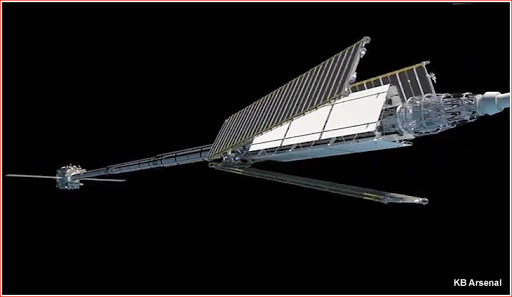Russian TEM.jpg

Part 2 of 2 Parts (Please read Part 1 first)
With a large portfolio of nuclear technology resulting from decades of research as well as a big budget, the Russian Ministry of Defense has apparently become the primary backer of the first post-Soviet attempt to construct a nuclear power-generating system for space propulsion. Of course the work on the reactor was largely classified, but in 2020, KB Arsenal released photos of what appeared to be the assembly of a full-scale TEM spacecraft or at least a prototype and a computer animation of the deployment of such a craft in Earth orbit.
The heart of the TEM space tug is the onboard nuclear reactor which will generate heat. The heat will be converted into electrical power either through some sort of mechanical turbine system or via a thermal emission method which will not require any moving parts. A thermal emission system is less effective than a mechanical turbine. However, it is far simpler and very familiar to the Russian space industry. From the recently released materials, it appears that a thermal emission conversion system will be used on the TEM.
The excessive heat that will be generated by the operation of the reactor will be released into space with a system of radiators. The images released of the TEM appear to feature a trio of main and three auxiliary radiators. The smaller panels will probably used to service the tradition needs of service systems aboard the spacecraft. The larger deployable and stationary radiators will probably be used exclusively to remove excess heat from the nuclear reactor. The computer animations of Earth orbit deployment showed a very complex three-stage process for the deployment of the main radiators.
The images that have been released of the TEM appear to show that a heat-carrying cooling fluid will be pumped through the radiation system by a turbine. It is definitely a less progressive technology than the capillary heat pipe radiating system which was originally planned for the spacecraft. Russia was testing such a capillary cooling system aboard the Mir space station twenty years ago.
In order to protect all the systems aboard the spacecraft from harmful radiation, the nuclear reactor will be placed behind a cone-shaped shield which will form a protective conical “shadow” free of dangerous particles. To further increase the safe zone, the reactor is attached to what appears to be a four-section telescopic boom made of a light-weight composite material. The boom deploys to its full length after the space tug separates from the launch vehicle in orbit.
According to the published material, the nuclear reactor on the TEM spacecraft would be active only after the craft reached an altitude between three hundred and seventy-five miles and five hundred miles. This is far enough above the Earth so that the atmosphere is too thin to cause the orbital decay and reentry of a stalled satellite. In the meantime, all the service systems of the space tug and its payloads can still be supplied with power from a pair of solar panels deployed on the sides of the propulsion module immediately after entering Earth orbit.
The images released by KB Arsenal in 2020 showed some of the key components of this huge vehicle including the propulsion module, stationary and deployable radiators and the deployable boom which will carry the reactor. There were no photos of the nuclear reactor, but it was shown in the computer animations that accompanied the photographs. It appears that even without its payload, the Russian TEM would be a twenty to thirty ton vehicle. This would require either an Angara-5M or Angara-5V heavy rocket to reach an initial orbit from the Vostochny spaceport. One image produced by GKNPTs Khrunichev in 2016 showed the Angara-5V rocket with a Briz-M upper stage carrying the TEM vehicle.